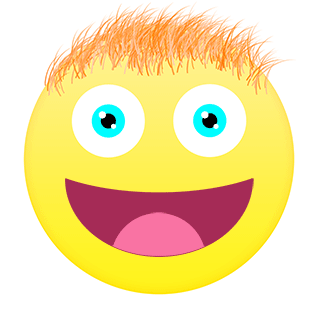



How technology is playing catch-up to our emotions
Random fact: there are 43 muscles in the face. 43 muscles that, whether we’re conscious of it or not, work together to show anger, sadness, fear, surprise, disgust, contempt and happiness – our basic human emotions.
We ‘speak’ with our eyes, our mouths, our noses and our foreheads. In fact, so much is revealed in our facial expressions alone, that an American psychologist, famous for his research on the subject, was famously sought out by the FBI, the CIA, among other police forces to help with their jobs (oh – and Pixar, too).
So what happens when all this is removed? Email and texting – and a lot of miscommunication, misunderstanding, and misinterpretation. We’ve all been there.
Our text-based means of communication today isn’t just prevalent in our work day, but many of our social interactions are based heavily – even solely – in text, as well. This could explain why a new kind of keyboard has crept onto our iPhones with the latest iOS update.
But what’s behind this evolution of the emoticon – and where is it all headed?
We ask Acting Program Head of Early Childhood for her insights, and insist on meeting with her face-to-face.
In Conversation with Dr. Nikki Martyn
Hello. [smile]
Hi. [smile]
[pause]
[laughter]
How is it so easy to make someone laugh?
Research tells us that during face-to-face conversations, what we do, is mimic. We’re unaware that we’re doing it – but we ‘meet’ the other person. If you smile, I smile. And the reason for this lies in our mirror neurons.
It’s this ‘monkey see, monkey do’ aspect of our neurology. If you cross your arms, then I might also cross my arms. It’s something we talk about frequently in child development. If I stick my tongue out, an infant will stick their tongue out. There’s no thought behind this – it’s a neurological response.
And this develops as we age?
Yes. This same concept evolves within us, as we eventually come to mimic emotionally. So if you laugh, I might laugh. If you’re bowled over and cackling, I might laugh hard – maybe not as hard – but I will enjoy it. And it will make me feel good. This is why we like to be around people who are happy – because they make us feel happy, too.
So here’s the thing with emoticons.
When we receive a text message, and see an emoticon of a happy face on our screen, that same part of our brain becomes activated – in the same way it does in infancy. The emotional centres of our brains, through use of mirror neurons, are now connecting. It’s almost as if we were sitting together, and you smiled.
We know this to be true because we can now see how the brain becomes activated using MRIs. Researchers in Japan took this one step further to analyze the difference between emoticons and emojis – those graphic emoticons we now have on our phones. They found the more graphic the emoticon, the more our brains respond to it. As the emoticon becomes less abstract – or more human-like – our brains respond accordingly.
And that’s why we’ve seen this evolution from emoticon to emoji. Have you noticed how many versions of a happy face there are?
A text message of a smile, makes you smile. It actually makes you feel good. And a text message of a sad face makes you feel sad. And then empathy is brought out. They’re providing us that same sense of connection, using technology.
It seems incongruous, perhaps, given we often think of technology as unemotional.
This speaks to how we’re using technology today. As we’re using it more and more socially, we’re having to find ways to convey emotion through text. Emoticons and emojis are allowing us to connect and develop a shared intimacy. And that’s huge.
In many ways, we, as human beings, create our identities based on feedback from social relationships – whether we like it or not. We are hardwired to want to create intimacy. To want to connect with others. And we know that developing relationships with others provide us with a wealth of benefits – from social wellbeing, to our physical health. Now, our identities and relationships are developing through email, through Facebook, through text.
Where do you see this headed?
There’s this suggestion that we’re returning to a pictographic script. Which, we need to remember, would be nothing new. But it’s interesting to watch children use them, as this may hold clues.
I have watched children text each other using only emojis. I have no idea what a string of images means, or why you would ever need a smiling cat - because I’m old :) But what we’re seeing is the emergence of subgroups – where certain images have specific meaning among a small group, almost like a dialect.
I do wonder how this will progress, 10, 30, 50 years from now, given children today are expressing emotional thoughts and feelings solely through these images. It will be interesting, too, to watch how emojis themselves evolve.
We know this can never replace words – nor can words ever replace one-on-one connection. But I imagine the trend will continue where we see more and more use. Simply, because, they make us feel.

